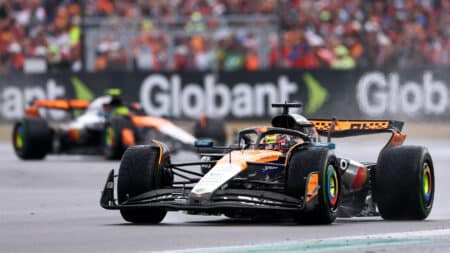
Horner's departure shows age of the maverick F1 boss is over
Christian Horner has now left Red Bull, the last of a certain breed of F1 team principal
Well at last someone has put some figures to a situation we’ve known has existed for years, namely that car manufacturers have been actively manipulating mandatory EU tests to determine fuel consumption and CO2 emissions and consequently producing figures that bear no relation to what any normal person could expect to see from their cars.
According to the Transport & Environment think tank, ‘the gap between test results and real-world performance has become a chasm, increasing from eight per cent in 2001 to 31 per cent in 2013 for private motorists, and without action is likely to continue to grow to over 50 per cent by 2020.’ The current gap for company car drivers is already 45 per cent, giving an overall average of 38 per cent.

Source: Transport & Environment
Additionally it claims this phenomenon costs the average motorist approximately €500 extra in additional costs compared to the claimed figures. This however must be offset by consequentially lower taxation rates.
The report goes on to name Mercedes-Benz, BMW and Ford as the worst offenders and Toyota, the PSA Group that owns Peugeot and Citroen, and Fiat as those whose numbers bear closest resemblance to reality. General Motors and the VW Group are somewhere in the middle. But even the most accurate companies still quote figures over 25 per cent better than a typical road user can expect to see in real life. In certain individual cases, the numbers are far, far more alarming, the report citing a Renault Megane with a gap between test and real world performance of 60 per cent…
The report also confirms another fact that, instinctively, I am sure most of us suspected: the smaller the engine, the greater the distortion between what is claimed and what is achieved. Indeed and somewhat sensationally, it says that engines with a capacity below one litre actually produce more CO2 than those with capacities between one litre and two litres. At the other end of scale it reveals almost no distortion between claimed and real world figures for cars with an engine capacity of five litres or more. Worryingly, across the board, cars are actually delivering only around half of the fuel consumption and CO2 improvements claimed for them since 2008.

Source: Transport & Environment
How is this happening? Firstly, and as I’ve said before, the test itself bears no relation to real world driving at all. For instance, for 20 per cent of the test cycle the car is deemed to be at a standstill, so if a manufacturer fits a car with a stop/start system there’s a massive statistical reward right there, of which only a small fraction will be passed onto the customer. And there is no requirement to simulate a motor cruise at all.
Tests are all conducted with power sapping accessories like air-conditioning, headlights, wipers, seat heaters and infotainment systems switched off, tyres with lower rolling resistance can be used as can low friction lubricants and gearshift strategies and gear ratios specifically designed to make sure the car is always in the optimum gear at all points of the cycle. I could go on – the report lists 13 different means by which manufacturers try to exploit the rules – but you get the picture.
It is easy to point the finger at the car makers. Easy, but wrong. All they are doing is what every commercial institution faced with a regulatory framework does, namely everything they can to maintain a competitive advantage while staying within the strict letter of those rules. The ridiculous results they then produce are mere symptoms of the real problem, which are the rules themselves. These weren’t fit for purpose when introduced and would now be laughably inadequate were the implications not so serious.

Source: Transport & Environment. Click to enlarge
Of course the car manufacturers will resist change because they have spent years and countless millions learning how to exploit the existing rules to their own advantage. And as the single largest annual jump in the disparity between claimed and real world consumption was registered only last year, we have to assume the curve is still getting steeper.
The EU, which has let this problem grow and grow is now finally reacting and working to introduce a new set of rules called WLTP (world light vehicle test procedure) in 2017. The problem is that passing the new tests will not be cheap and according to Exane BNP Paribas could raise the price of a new car by close to €1000. And that’s presuming the EU’s timeframe holds up under the combined lobbying might of the entire industry. According to a report in Automotive News Europe, the ACEA (European Automobile Manufacturers Association) regards the 2017 timeframe as ‘incredibly ambitious’, while BMW CEO Norbert Reithofer has said manufacturers want its introduction to be delayed until 2020.
I’m sure they do and equally confident they will get their way, not least because it’s hard indeed to imagine all the manufacturers being ready to adopt the WLTP formula in little more than two years. Which means we can expect at least five more years of ever more misleading fuel consumption claims and stated CO2 emissions that bear ever less relation to what’s coming out of your exhaust pipe.

Christian Horner has now left Red Bull, the last of a certain breed of F1 team principal

Was Oscar Piastri the real winner in the long run after Silverstone? asks James Elson

Lewis Hamilton hadn't won in almost three years – and then produced a sensational victory at Silverstone 2024. James Elson explains why it was his best ever

Describing this year's championship race as a 'battle' might be slightly over-egging it, writes James Elson